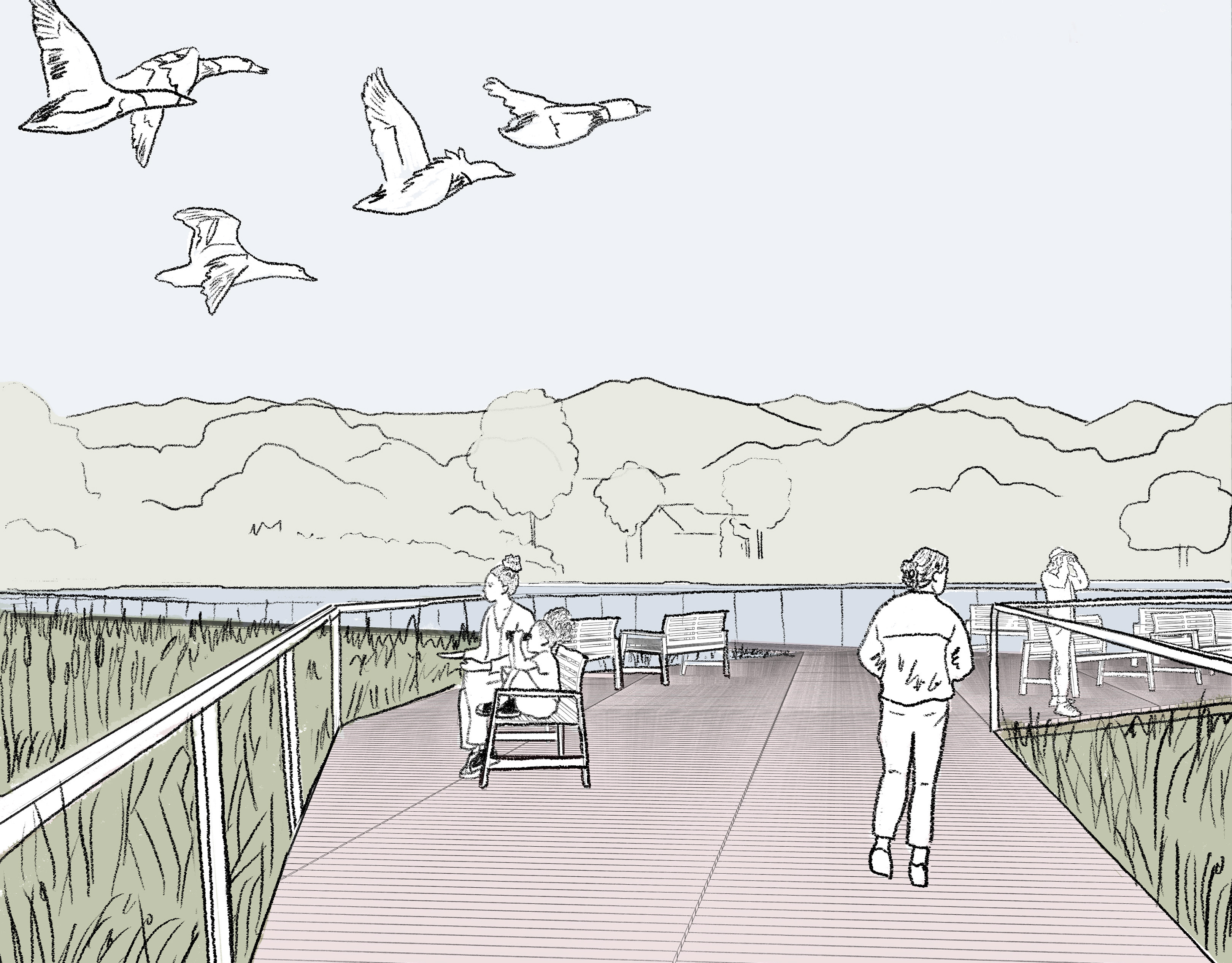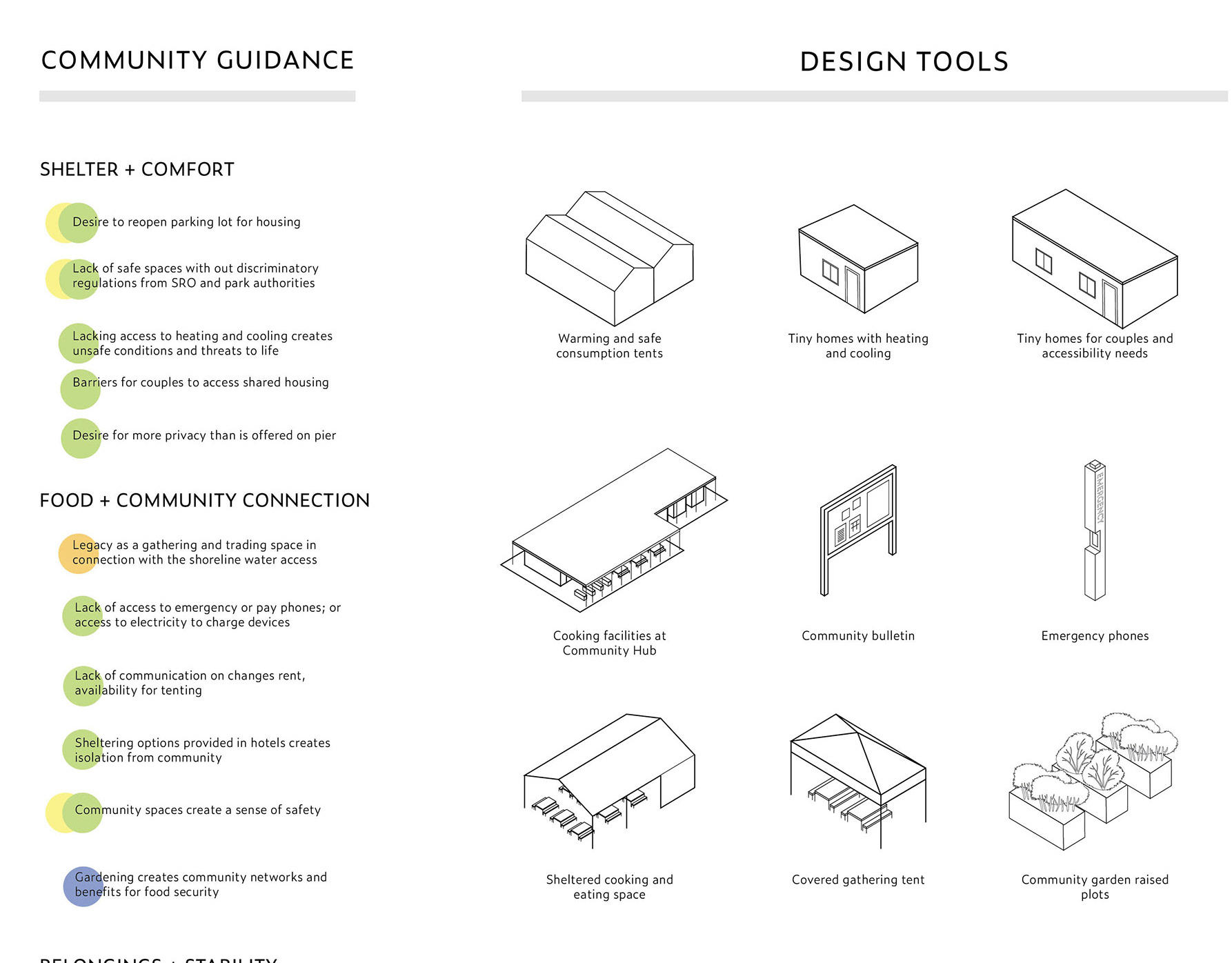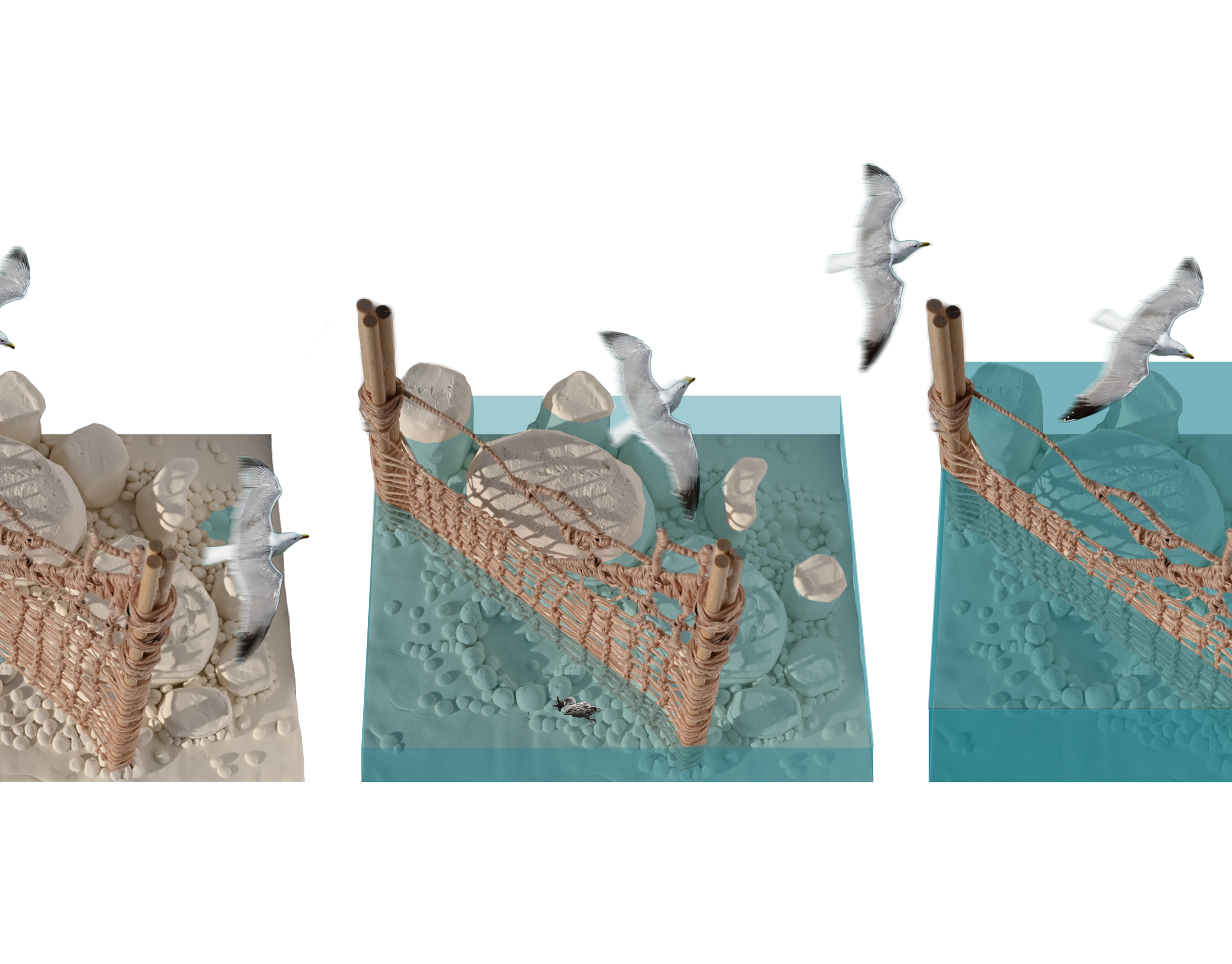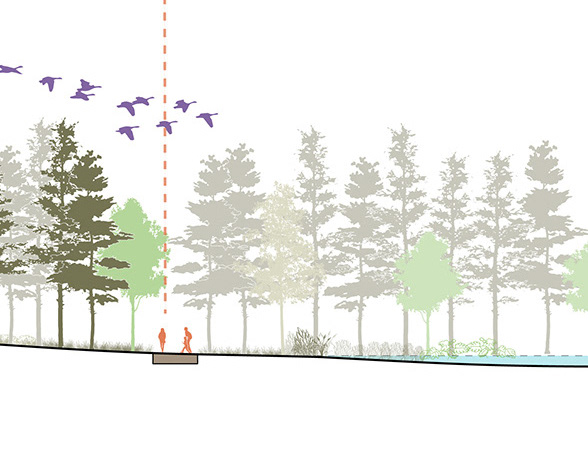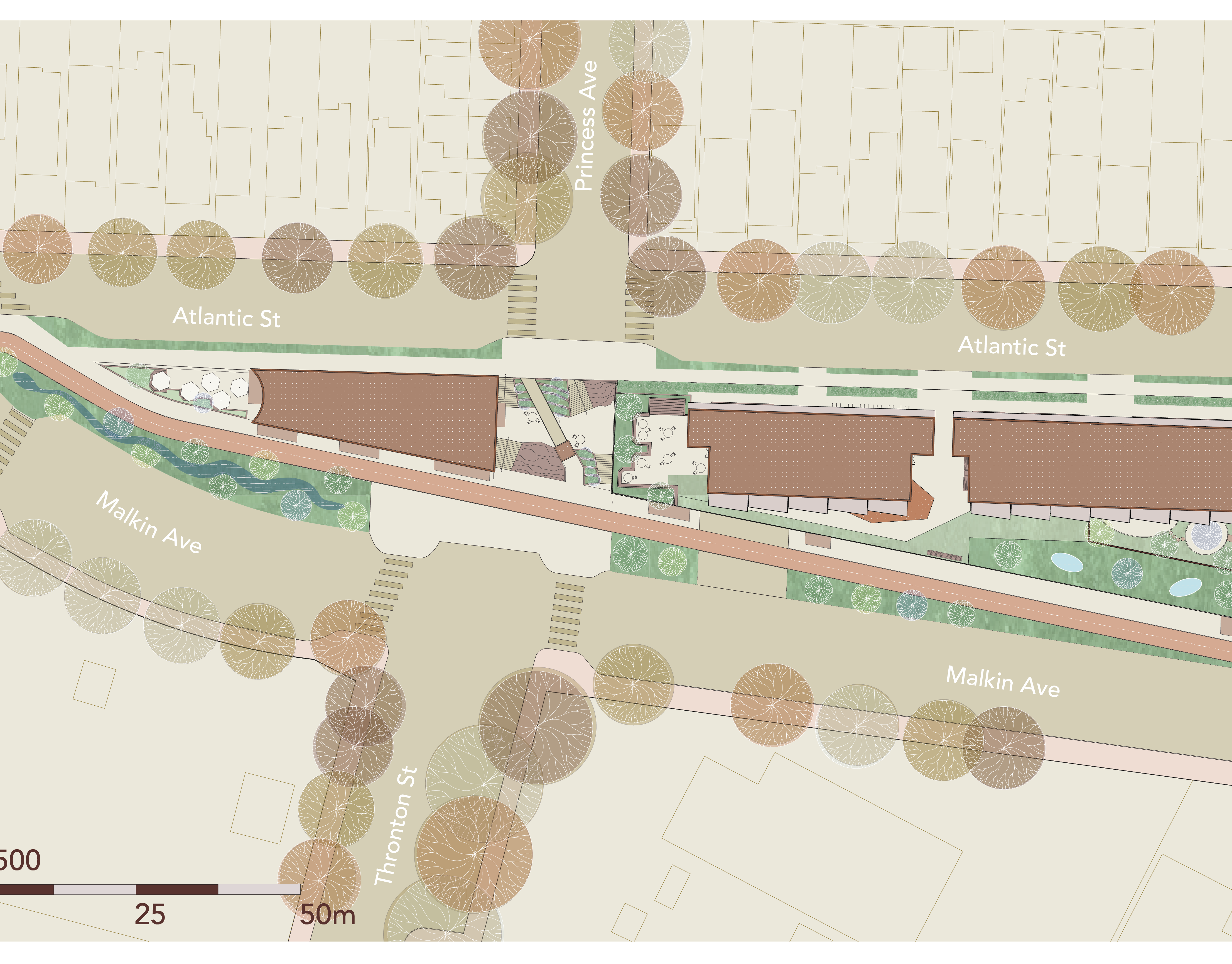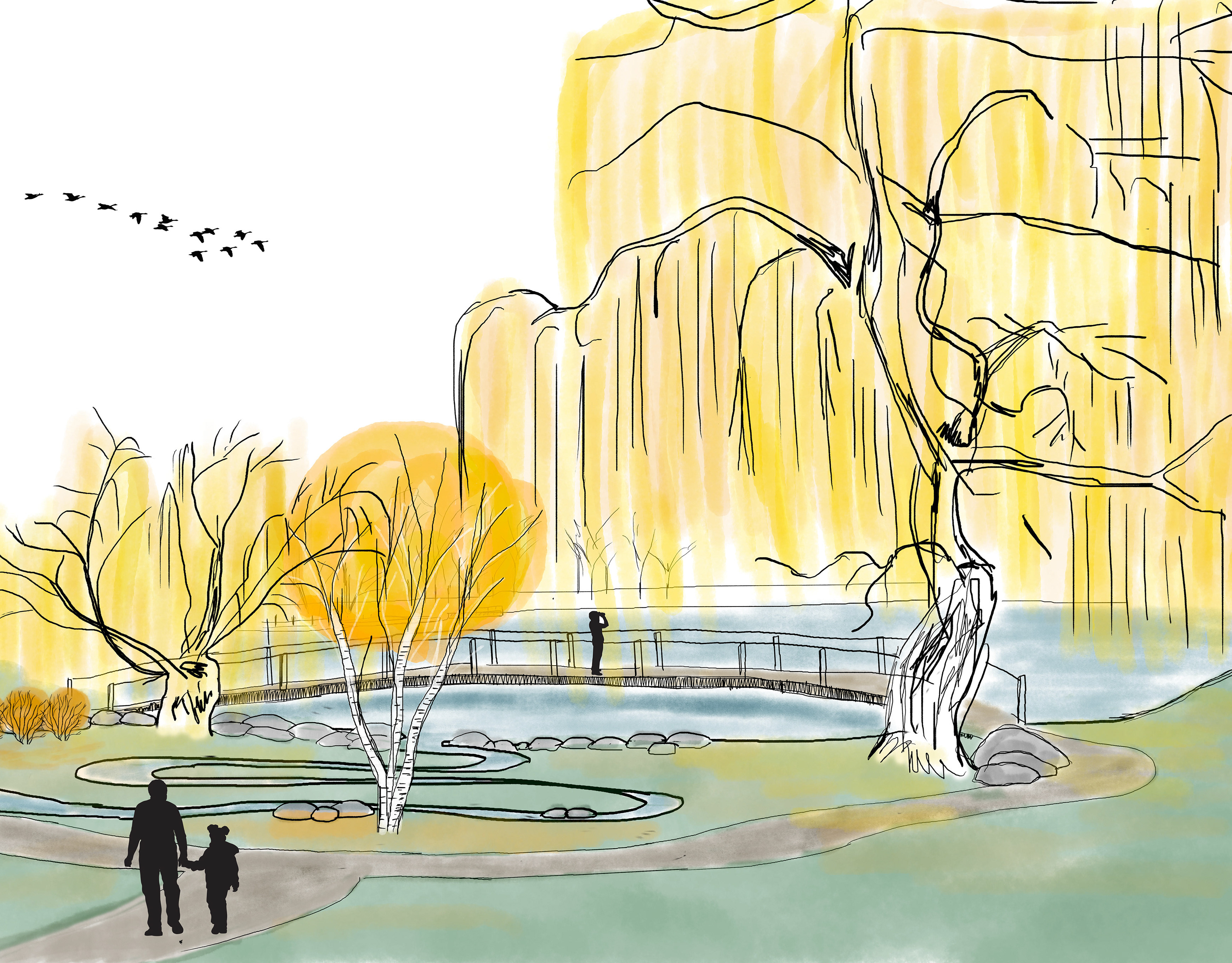Project Description
For my first studio project, titled "Decay and Accumulation", I explored the phenomenon of decaying driftwood over time and the resulting accumulation of sediment and vegetation. Through this exploration, I examined the cyclical nature of decay and accumulation that resulted from the changes to topography as the ocean currents shaped the driftwood and beach.
This project was completed in Fall 2022 for the Introductory Landscape Architecture Studio at the University of British Columbia (UBC), with direction from Sara Jacobs, UBC Professor, and Tatiana Nozaki, HAPA Landscape Designer.
Site impressions and explorations
Initial Impressions of site and exploration of imagined future site conditions
Ideogram exploring driftwood decay (Photoshop)
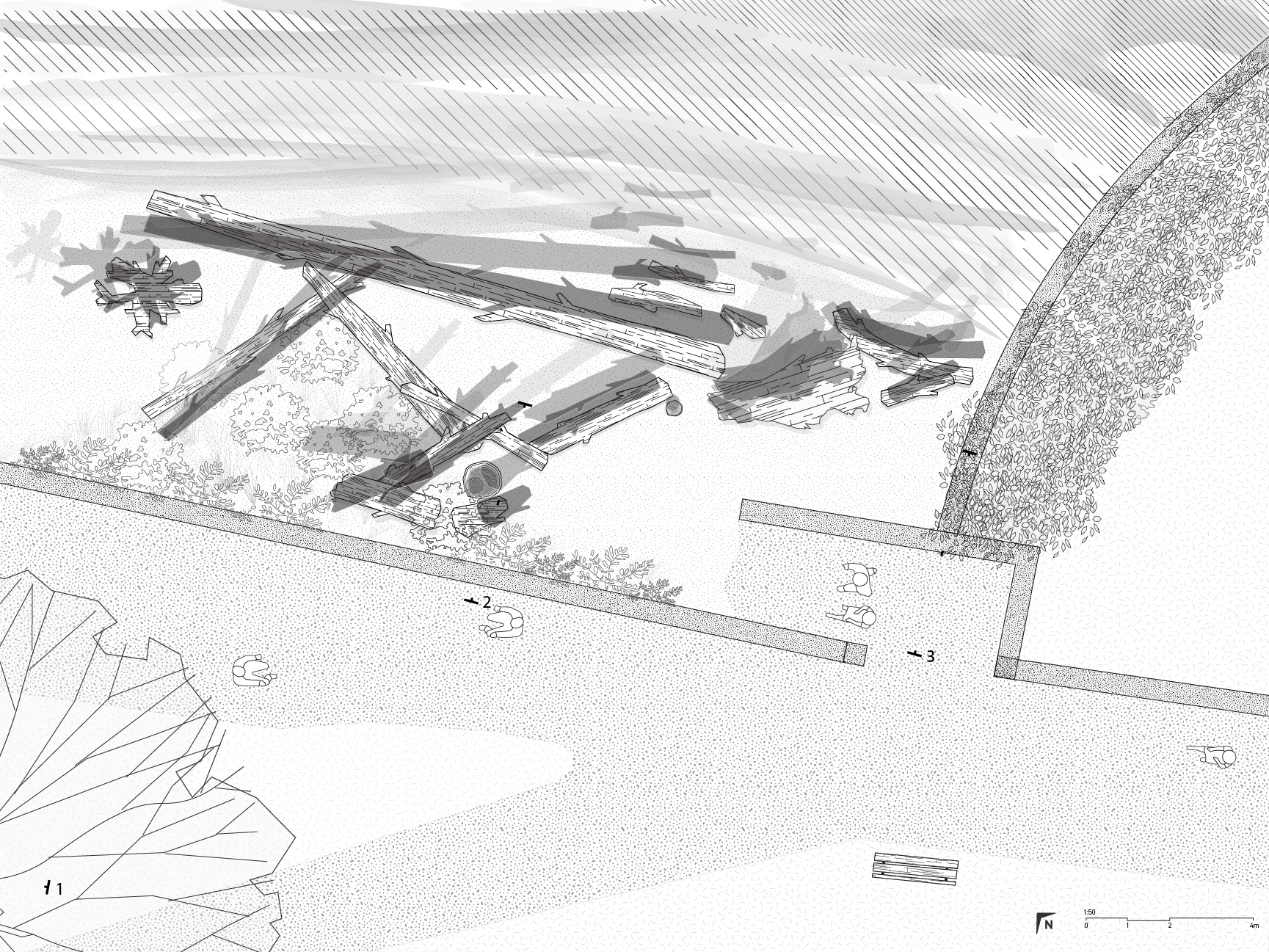
Digital Plan, Beach next to Foxes Den Splash Pad, Stanley Park, Vancouver BC (Adobe Illustrator)
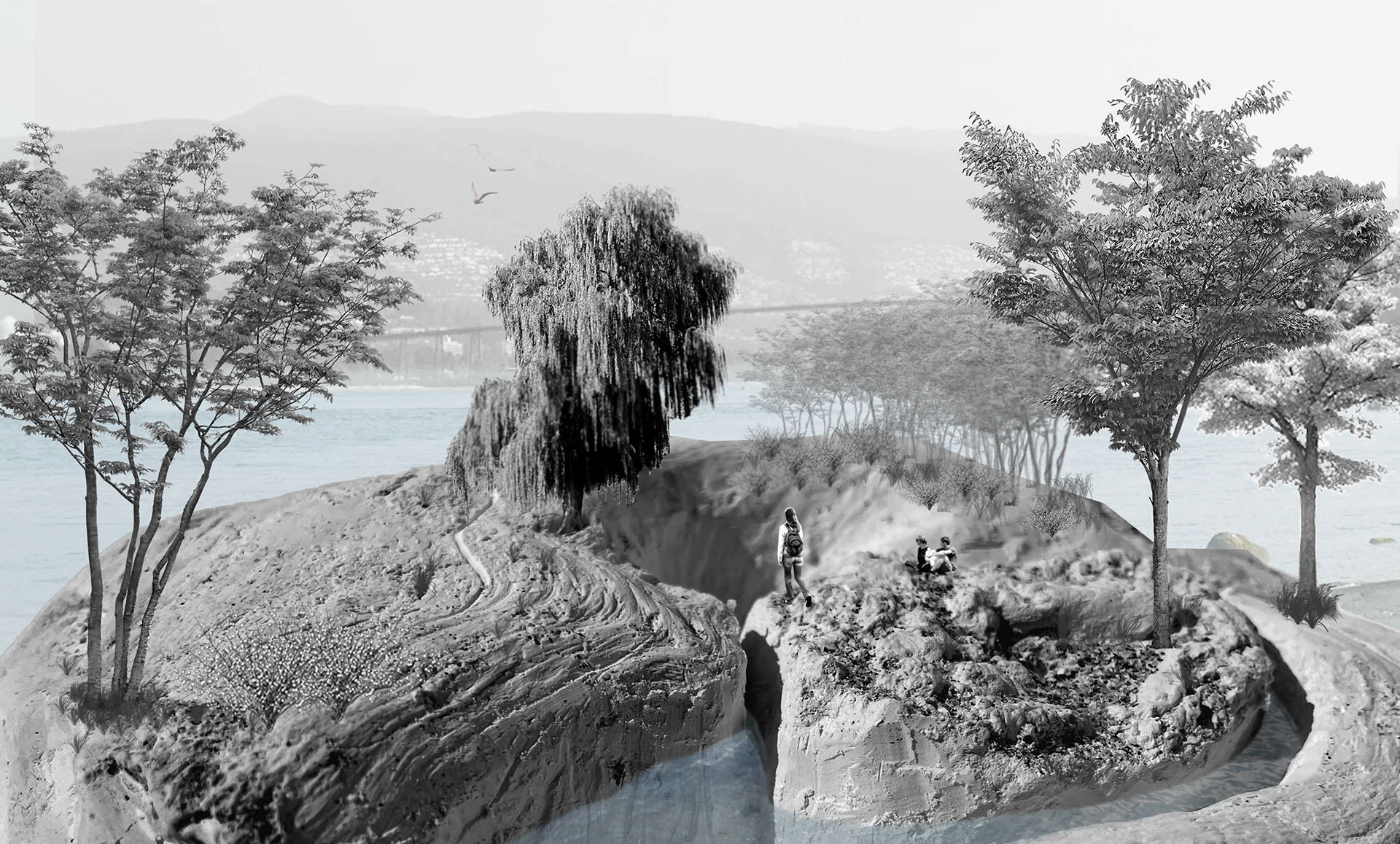
Perspective, Imagined Future State of Stanley Park in 50 Years (Adobe Photoshop)
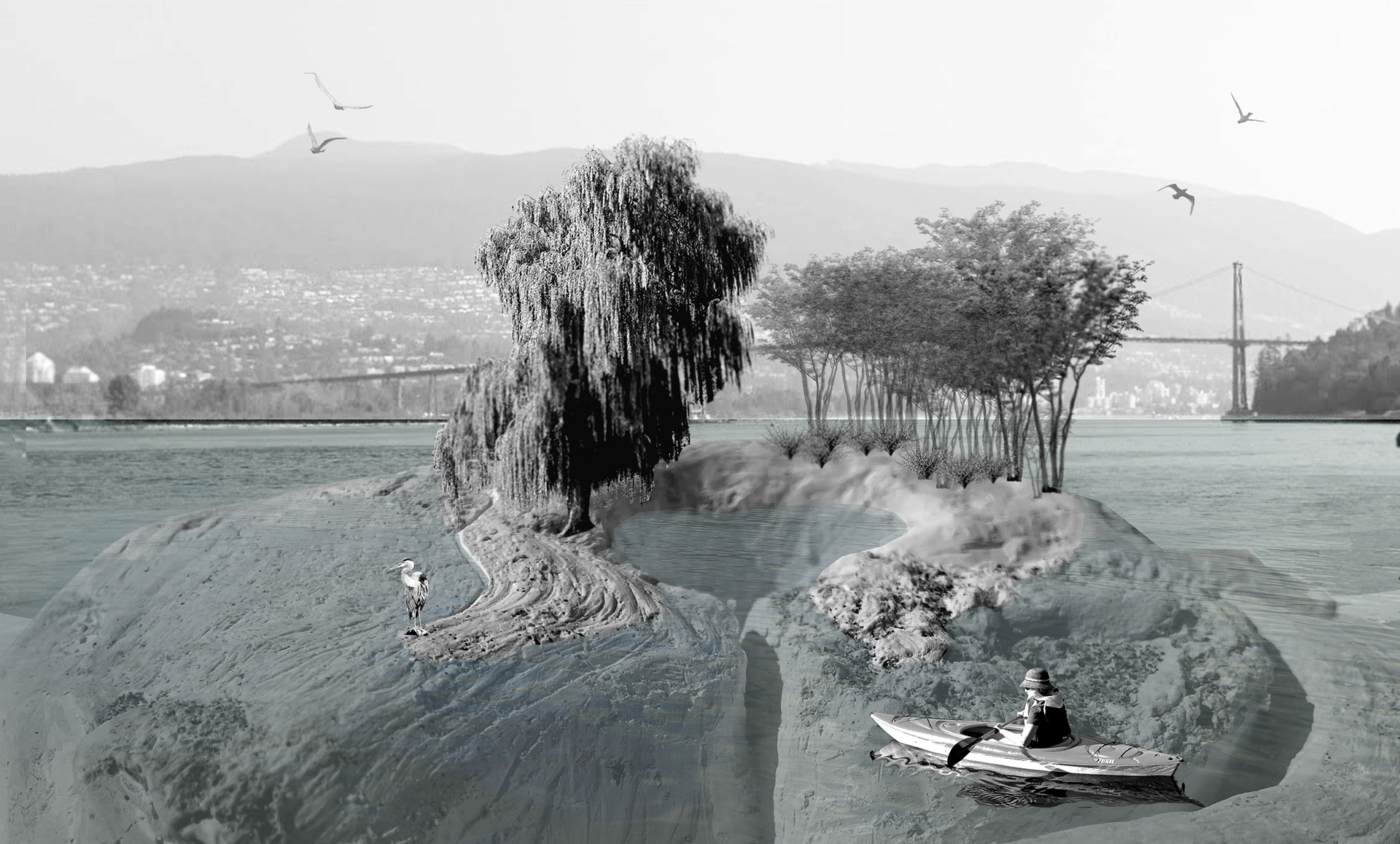
Perspective, Imagined Future State of Stanley Park in 100 Years (Adobe Photoshop)
Exploring site topography
Through model making, I explored how the driftwood changed the topography of the beach over time, causing sand to accumulate, creating shelters for small insects, and providing space for new plant life to grow.
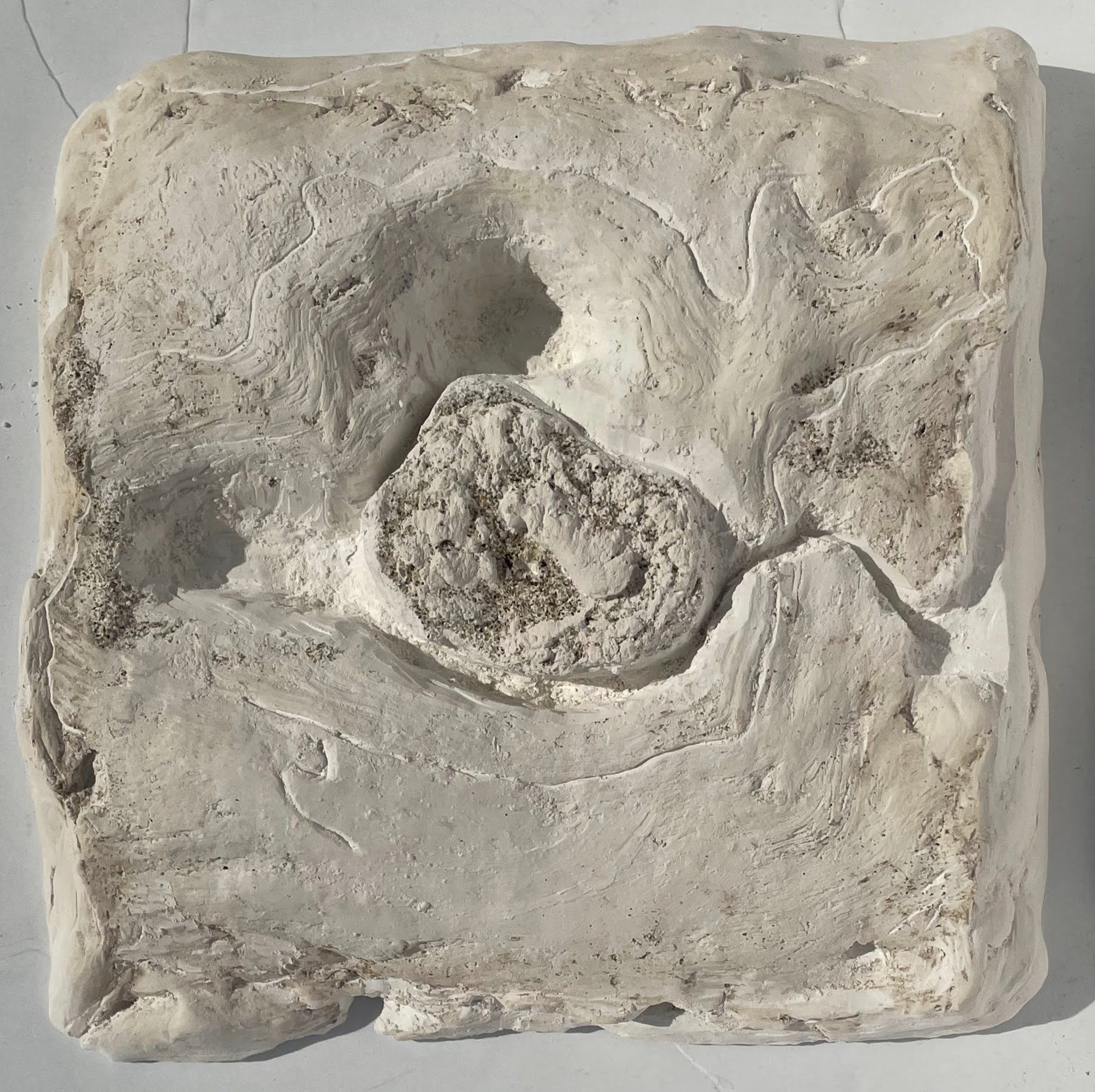
Carved cast of drift wood (Plaster)
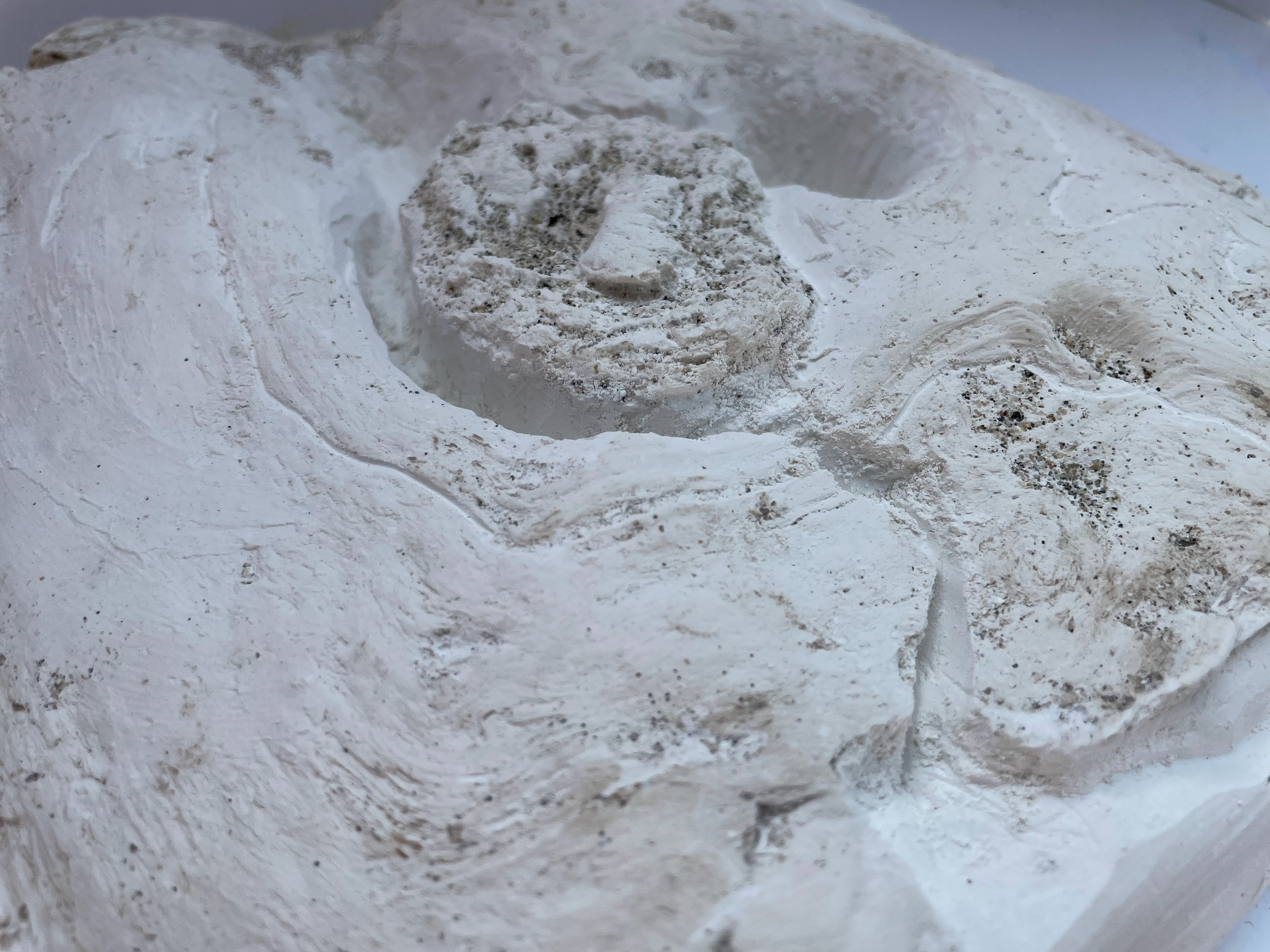
Carved cast of drift wood (Plaster)
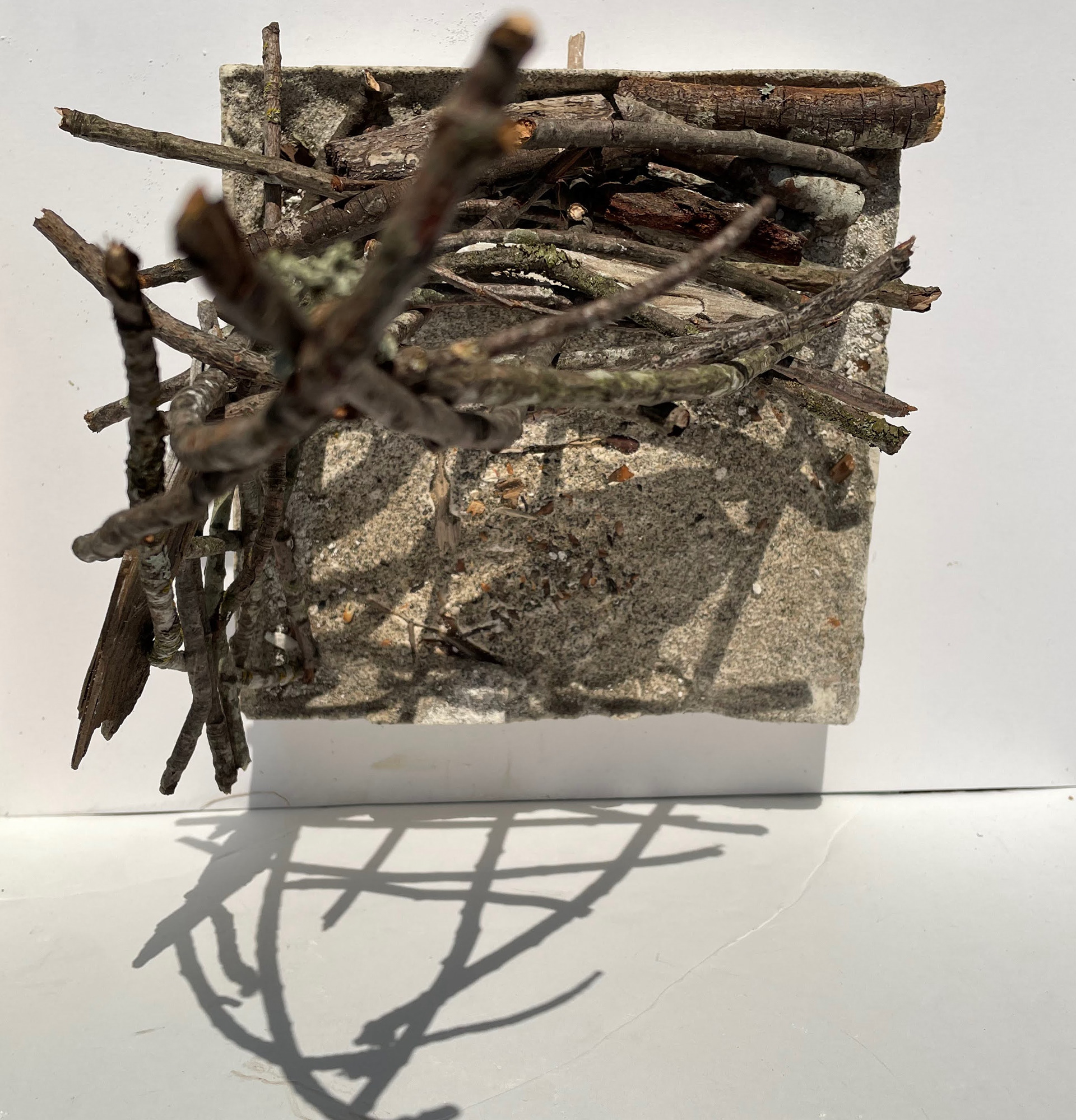
Cast of beach with constructed shelter (Plaster and sticks)
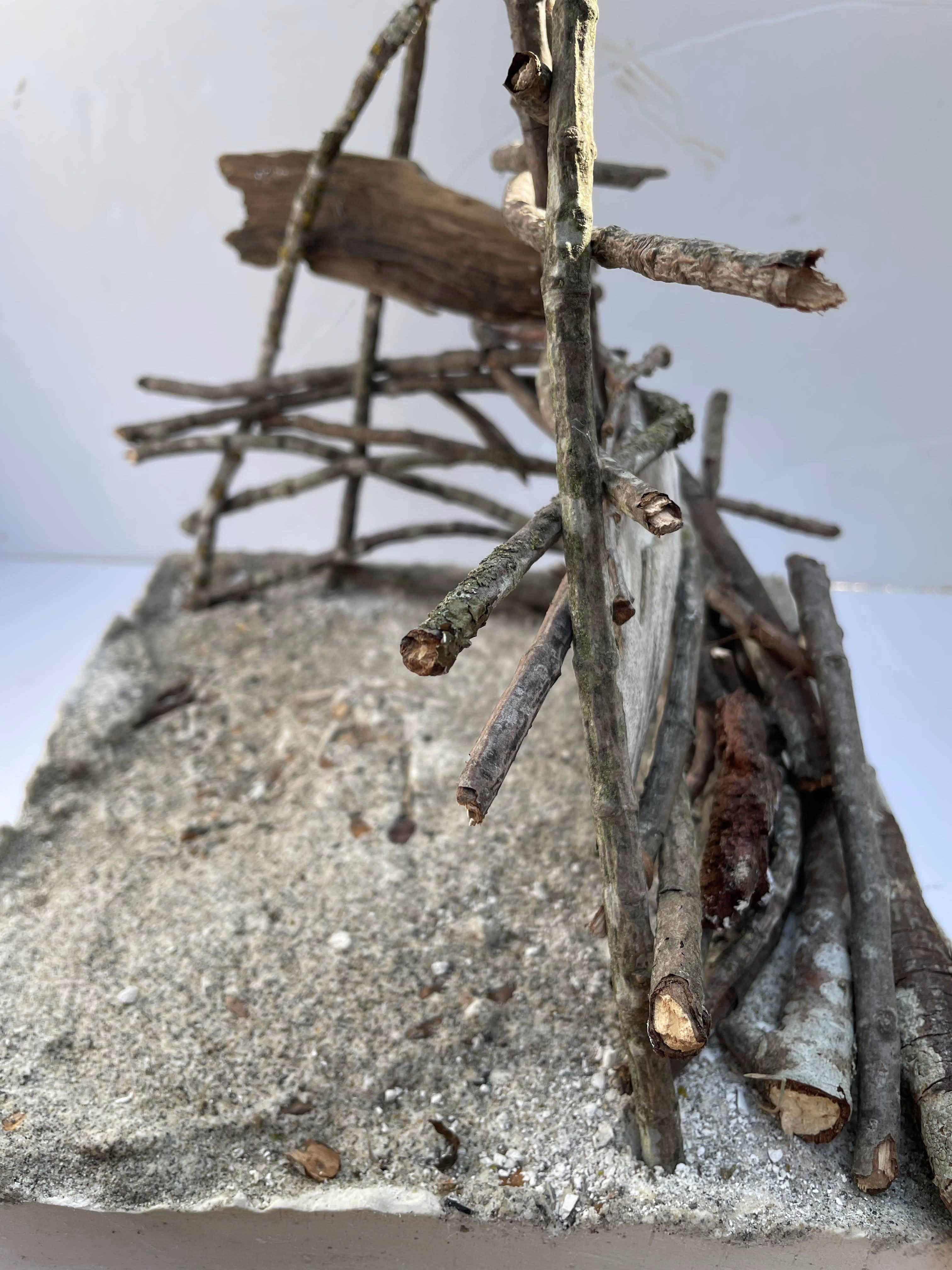
Cast of beach with constructed shelter (Plaster and sticks)
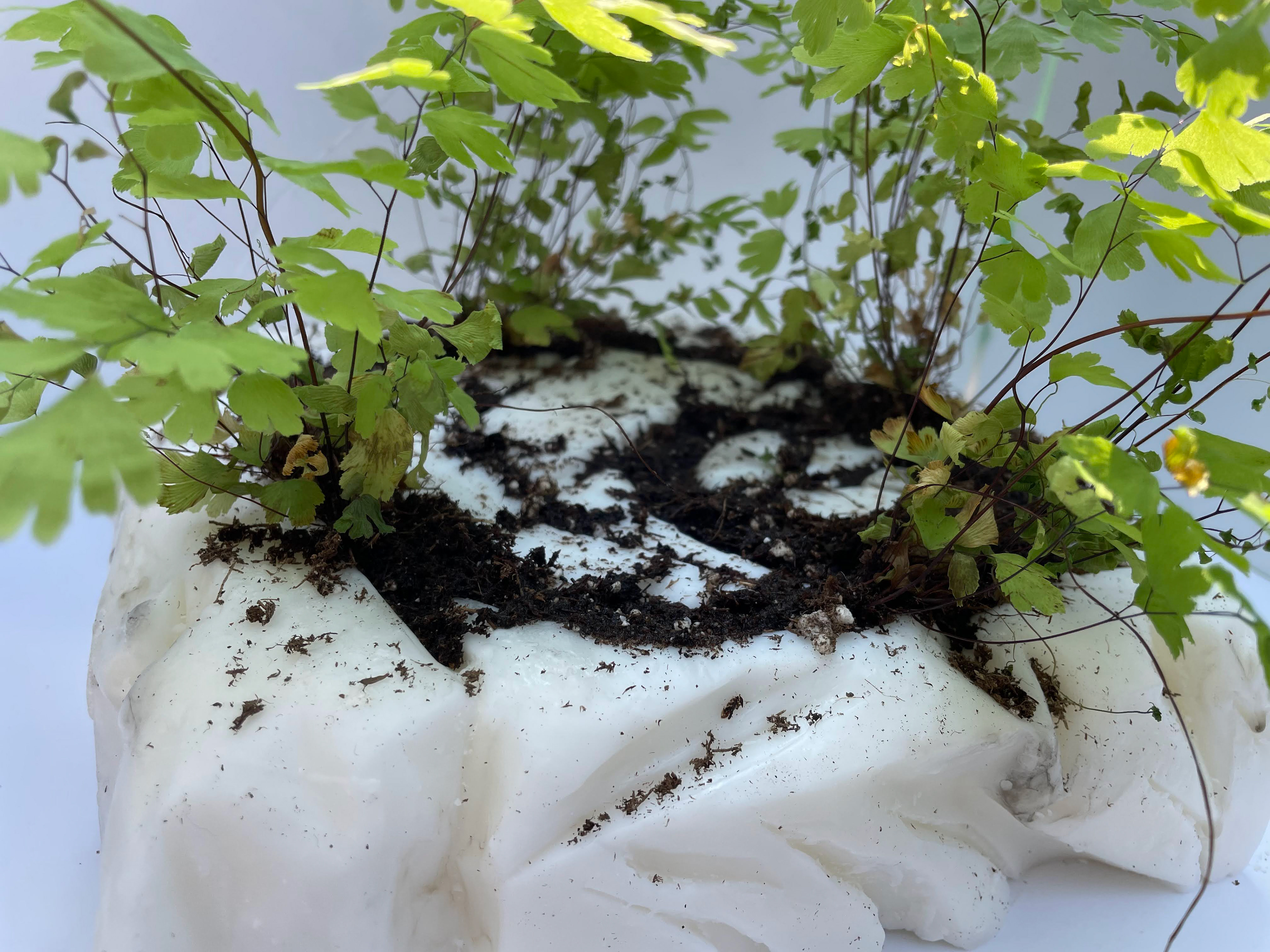
Carved planter (Wax and Soil)
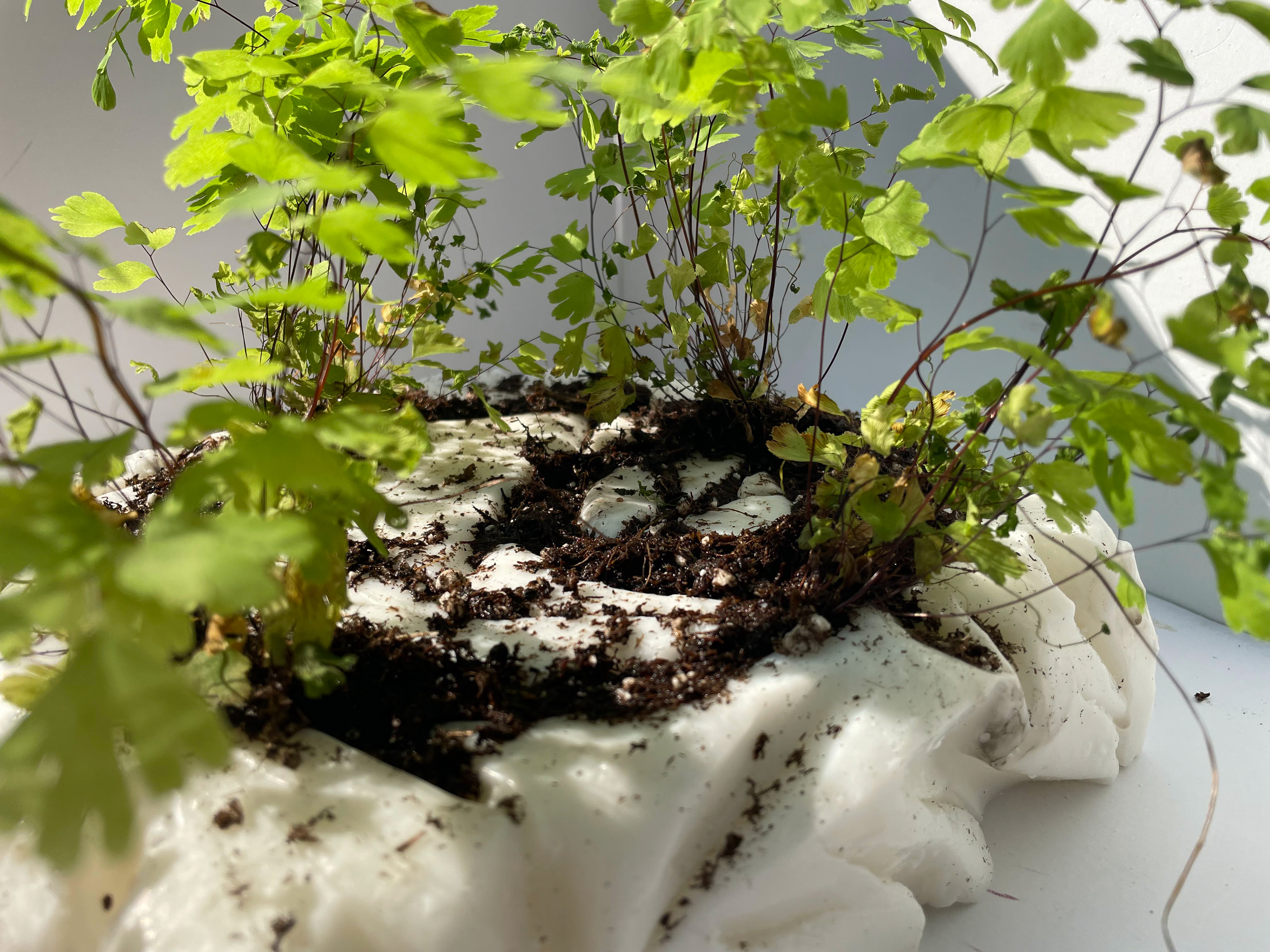
Carved planter (Wax and Soil)
Investigation of organisms contributing to the cycle of Decay
The cyclical nature of decaying matter providing nutrients and shelter to support new life often goes unseen. The process of decay is often slow and happening at small scales, but the scale of its impact on topography is immense.
As I progressed through this project, I became interested in the organisms that contribute to the cyclical process of reshaping the topography by decomposing organic material.
While very small, all of these organisms make a substantial impact on the topography of the spaces around them, and make way for larger animals and plant life to become established - and the cycle of decay supporting new growth continues.
Key Plan (Illustrator)
Serial Section (Rhino, Illustrator, Photoshop)
Longitudinal Section (Photoshop and Illustrator)
